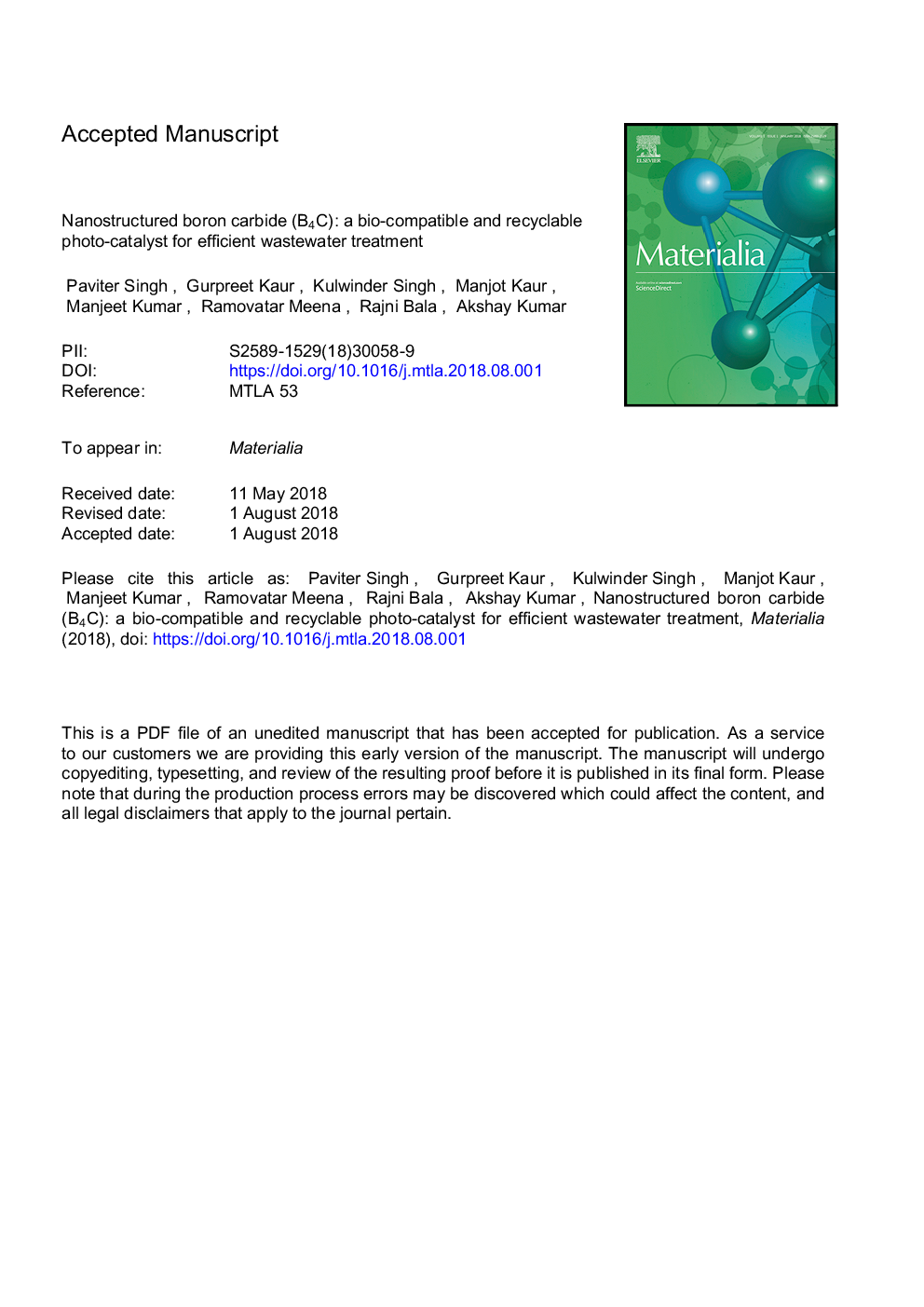| Article ID | Journal | Published Year | Pages | File Type |
|---|---|---|---|---|
| 8966285 | Materialia | 2018 | 24 Pages |
Abstract
Carbides have noteworthy manifold properties, solely adjusted to the requirements of different users. Nanostructured Boron Carbide (B4C) is one of them which possess unique characteristics to move towards industrial wastewater treatment from its traditional uses. Present work deals with the first photocatalytic study of biocompatible nanostructured B4C for organic (Methylene blue, MB) as well as industrial (Synazol yellow, SY) dye. The textile industry excretes non-biodegradable waste into water bodies, so effective and economical catalyst for the removal of industrial pollutants is the need of the hour. B4C shows remarkable results for the degradation of MB and SY dyes. The high degradation efficiency of 91.09% and 76.04% was achieved with 0.5Â g/L catalyst for SY and MB dyes respectively loading due to the presence of defect states in the material. The effect of concentration of catalyst loading on the extent of photo-degradation has been considered for this study. As the concentration of B4C catalyst increases, the number of active sites on the surface of catalyst also increased which leads to improvement in degradation of dyes. Reusability of the same catalyst showed good results for its cost-effective use. The toxicity assessment revealed superior biocompatibility of B4C nanostructures upto the concentration â¼800Â ppm. These findings indicate that B4C nanostructures may have potential to become a safer and promising photocatalyst for industrial wastewater treatment.
Related Topics
Physical Sciences and Engineering
Materials Science
Biomaterials
Authors
Paviter Singh, Gurpreet Kaur, Kulwinder Singh, Manjot Kaur, Manjeet Kumar, Ramovatar Meena, Rajni Bala, Akshay Kumar,
